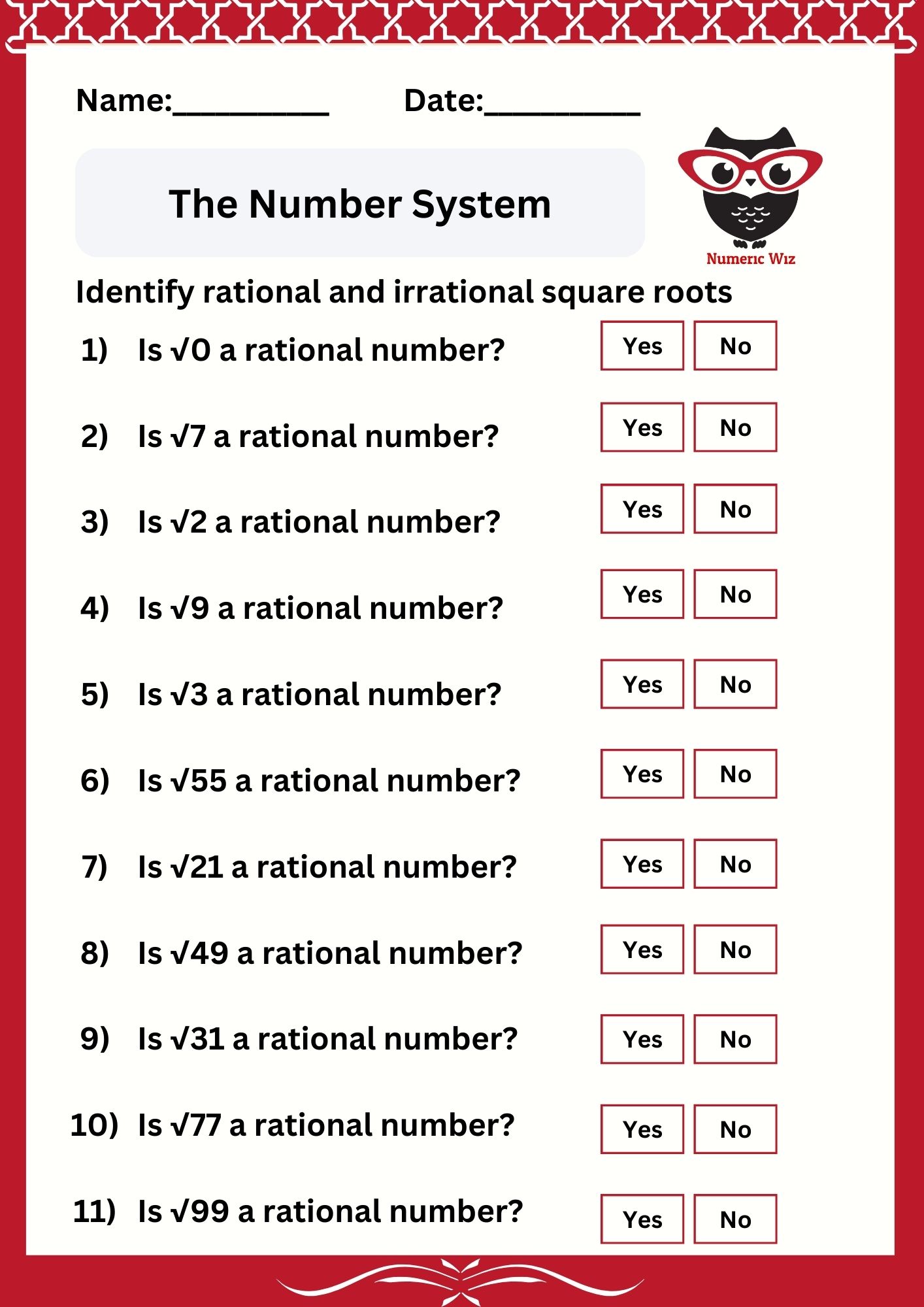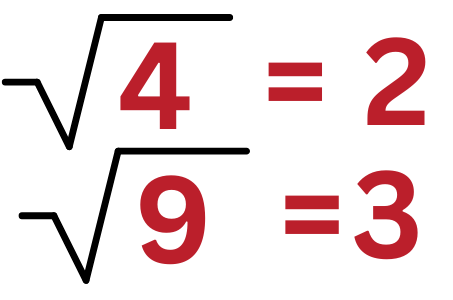
Numbers can be classified as rational or irrational, and understanding their square roots is essential in mathematics. Let’s explore how to identify whether a square root is rational or irrational!
 What Are Rational and Irrational Numbers?
What Are Rational and Irrational Numbers?A rational number can be written as a fraction 𝑎 / 𝑏 where a and b are integers, and b ≠ 0. It has a terminating or repeating decimal expansion.
Examples:
3 / 4 = 0.75
1 / 3 = 0.333...
An irrational number cannot be written as a fraction. Its decimal never terminates and never repeats.
Examples: π = 3.141592653..., e = 2.718..., and √2 = 1.41421356...
 Understanding Square Roots
Understanding Square RootsThe square root of a number x is a value that, when multiplied by itself, gives x. Some square roots are rational, while others are irrational.
A square root is rational if it results in a whole number or a fraction. This happens when the number inside the square root is a perfect square (like 1, 4, 9, 16, 25, etc.).
Examples of Rational Square Roots:
If the square root of a number results in a whole number or a fraction, it is rational.
Identifying Irrational Square Roots
A square root is irrational if the number inside the square root is not a perfect square. In these cases, the decimal representation goes on forever without repeating.

Example of Irrational Square Roots:
![]() (decimal never repeats)
(decimal never repeats)
Since numbers like 2, 3, 5, and 7 are not perfect squares, their square roots cannot be written as fractions, making them irrational.
Key Takeaways:
Understanding rational and irrational square roots helps in algebra, geometry, and real-world applications like engineering and physics. Let’s explore and practice with the help of designed worksheets at NumericWiz!
For a limited time
